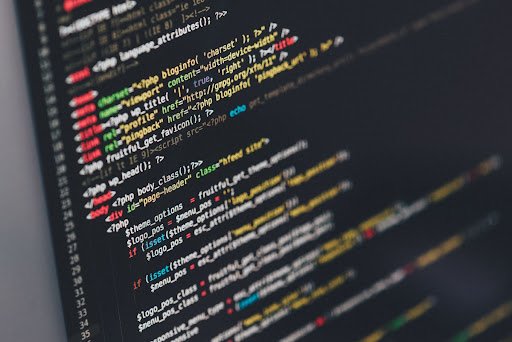Python has become one of the most popular programming languages due to its simplicity, versatility, and ability to integrate seamlessly with other technologies and languages. One of the core strengths of Python lies in its interfacing capabilities. Python’s ability to interface with other languages such as C/C++, Java, and hardware APIs makes it a powerful tool for software development, data science, and embedded systems. In this article, we will explore the concept of Interfax Python, common techniques, real-world applications, and best practices.
What is Interfacing in Python?
Interfacing refers to the process of enabling communication between different software components, APIs, or programming languages. In Python, this often involves integrating external code, libraries, or hardware components with Python programs. Interfacing helps extend Python’s capabilities by allowing it to leverage high-performance code from other languages or connect with external systems.
Some popular interfacing use cases include:
- Using C/C++ libraries for faster computations.
- Interacting with Java applications through a Python-Java bridge.
- Connecting with hardware devices using Python for IoT projects.
- Calling REST APIs to fetch and manipulate web resources.
Common Python Interfacing Techniques
Several libraries and frameworks exist to facilitate interfacing between Python and other languages or systems. Below are some of the most commonly used methods.
1. Python-C Interfacing: ctypes and Cython
Python can interface with low-level C or C++ code to improve the speed of execution. This is especially helpful when working with performance-intensive tasks, such as scientific computing or machine learning.
ctypes
ctypes is a built-in Python library that allows calling functions from dynamic-link libraries (.dll or .so files). This enables Python to interact with precompiled C code.
Example using ctypes:
Cython
Cython is a tool that allows Python code to be compiled into C or C++ code, making it faster. It is often used for creating Python bindings to C libraries.
2. Python-Java Interfacing: Py4J and Jython
Python can also interface with Java, which is useful when working with enterprise-level Java applications.
Py4J
Py4J allows Python programs to call Java methods and access Java objects. It is often used in big data frameworks like Apache Spark to interact with the Java-based backend from Python.
Jython
Jython is an implementation of Python that runs on the Java Virtual Machine (JVM). It allows seamless interaction between Python and Java code, making it ideal for Java-centric environments.
Example using Py4J:
3. Python-REST API Interfacing: Requests Library
Python’s ability to interface with REST APIs is a key feature that makes it powerful for web development and data scraping. APIs allow different applications to communicate over the web by exchanging data in JSON or XML format.
Using the requests library, you can send HTTP requests and handle API responses easily.
Example of API call using requests:
4. Python-Hardware Interfacing: GPIO and PySerial
Python is widely used in IoT (Internet of Things) projects to interface with hardware components such as sensors, microcontrollers, and other peripherals.
GPIO Libraries (for Raspberry Pi)
The RPi.GPIO library allows interaction with the General-Purpose Input/Output (GPIO) pins on a Raspberry Pi, making it easy to control LEDs, sensors, and other hardware components.
PySerial (for Serial Communication)
PySerial is a Python library used for serial communication with hardware devices such as Arduino boards.
Example of serial communication with Arduino:
Real-World Applications of Python Interfacing
- Data Science and Machine Learning
Python interfaces with C/C++ through libraries like NumPy and TensorFlow to achieve faster computations in machine learning models. TensorFlow’s backend is written in C++ for performance, while Python serves as the front-end API. - Big Data and Spark
In Apache Spark, Python programs interact with the Java-based core using Py4J, allowing data scientists to work comfortably in Python while leveraging Spark’s power. - IoT and Embedded Systems
Python’s interfacing capabilities allow it to work with hardware components in IoT applications. Raspberry Pi projects frequently use Python to interface with sensors and devices through GPIO pins. - Web Scraping and Automation
Python uses APIs to extract data from websites or automate tasks. Libraries likerequestsandBeautifulSouphelp developers interact with web services and scrape web data.
Best Practices for Interfacing in Python
- Error Handling and Debugging:
When interfacing with external libraries or APIs, handle errors gracefully. Usetry-exceptblocks to manage exceptions that arise during communication. - Documentation:
Ensure proper documentation when using libraries like ctypes or Py4J, as interfacing can introduce complexities that are hard to debug without clear guidelines. - Testing:
Interface components should be thoroughly tested to ensure reliable communication between Python and external systems. - Performance Optimization:
Consider the trade-offs between speed and simplicity when choosing interfacing methods. For critical performance needs, prefer Cython or direct C bindings.
Conclusion
Python’s interfacing capabilities enable it to bridge the gap between different programming languages, systems, and hardware platforms. Whether it’s working with C/C++ libraries, integrating with Java, or communicating with APIs and hardware devices, Python provides versatile tools for seamless interfacing. By leveraging these techniques, developers can enhance Python’s functionality and build powerful applications across diverse domains such as data science, web development, and IoT.



